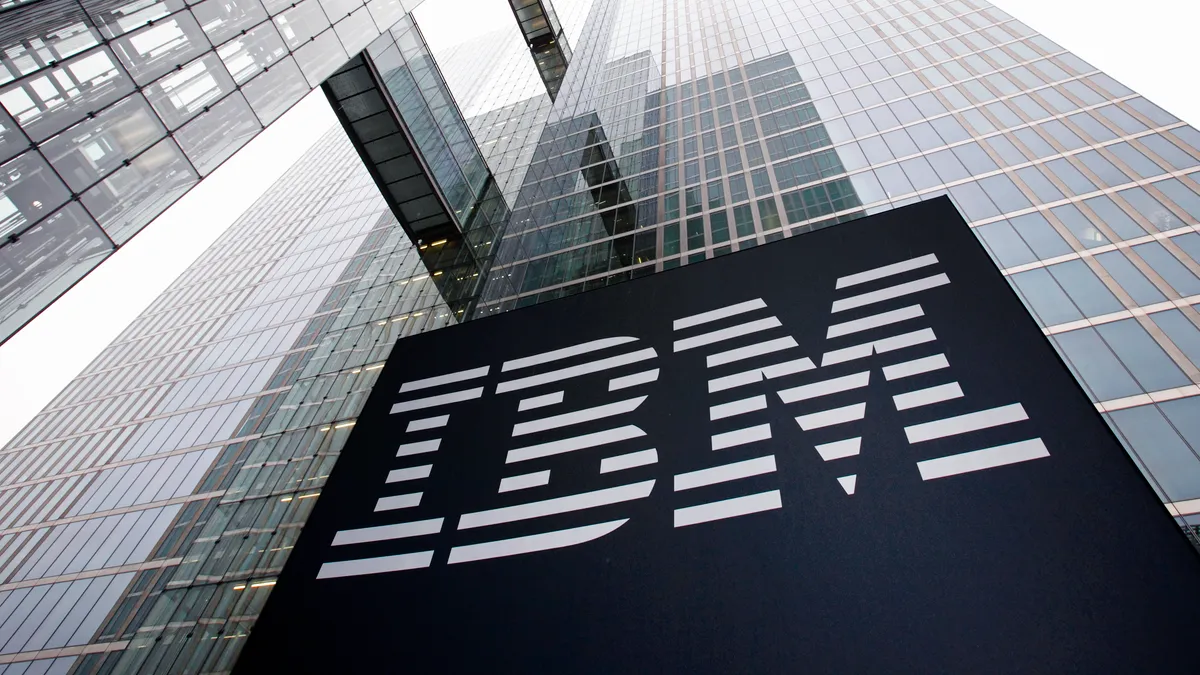IBM knew that its HR department was perceived as the compliance wing of the company — and that had to change.
As disruption became the new norm for the 100-year old tech giant, it became clear that a shift was needed, Carrie Altieri, IBM's vice president of communications for people and culture, told HR Dive in an interview. "We looked seriously at how the work of digital business actually gets done and recognized shifting to agile at scale was the change we needed to make," Altieri told HR Dive.
The company needed self-directed, empowered teams that could assemble and disassemble as necessary without management check-ins slowing things down — meaning leadership behaviors had to change as well.
"The traditional days of a leader saying 'trust me, I got this' were over," Altieri said. "We needed transformational leadership that empowered teams to move in an agile manner. And more than telling leaders to empower their teams, we needed to know how well they were taking signals from the group, from the market and putting them into practice."
Were leaders creating opportunities for employees to speak openly? Was feedback being acted upon? These questions, a focus on employee experience and a renewed commitment to "servant leadership" has translated directly into revenue during the past five to six years, Altieri said.
Rebranding HR and revising reviews
To remain robust and relevant in a world where many HR and learning and development functions can be automated or at least digitized, employees need to be viewed as clients.
In 2015, IBM began a complete redesign of its performance management system to align with its new leadership model. Old performance review models weren’t attuned to "client need" and provided too much of a backward view, Altieri said; the reviews needed to be more fluid and aligned to the way people worked today. IBM's CHRO Diane Gherson convinced senior line management to abandon the old review process and pioneered an approach that asked employees to be stakeholders in the process.
IBM asked more than 350,000 employees to collaborate on the update via an internal social platform. The responses revealed staff wanted to shift the emphasis from assessment to feedback. "The old IBM would have gotten HR experts together and spent months producing something, written it up and issued it to employees," Altieri said. "The new co-creation approach measured sentiment and logged wish-lists. Comments were exposed to everyone — even when they were openly critical. Employees voted on what would change."
The result? Employees get the feedback they want, leadership behaviors have changed and IBM holds managers more accountable. With mini-pulse quarterly feedbacks and an annual engagement pulse — four to five questions plus comments interpreted by a machine language tool — IBM assesses how employee clients are doing. Are they getting quality feedback from their manager? If not, Altieri said, HR nudges the manager to do better, even recommending management development training from the company's own library of classes. And leaders and managers are held accountable for their feedback results.
The view from outside
Michael Schrage, a research fellow at MIT’s Initiative on the Digital Economy and an MIT Sloan Management Review guest editor, has been following IBM for many years.
The employer's biggest challenge was to ensure its strengths didn’t become its weaknesses due to the sheer size of the organization, he said. "First and most obviously you can’t "make" an image," he told HR Dive. "Without a shift in substance, nothing will change. HR must commit to being a resource as opposed to being an enforcer or box ticker."
Digitization is changing every part of organizations, Schrage said, particularly HR. The Review published research on the IBM performance ratings shift, and Schrage said he believes HR as a profession must develop a more analytic mindset that allows professionals to better engage with employees and managers. "HR is in a unique position that’s theirs to lose for mediating feedback, assessments and quantification between managers, employees and associates," he said.
HR also must become a champion of professional development and be an ally to employees as they maneuver through the organization, he added. "Do you want to be a risk messenger or an enabler messenger?" Schrage said. "HR needs to get into the tech business just as much as marketing; performance management must be a service that illustrates the value a company puts on its resources."
IBM has always been in tech but for HR, the challenge is to combine both. The amount of data at the disposal of HR professionals is only beginning to be mined, Schrage noted. For everything from candidate selection through succession planning, information is as important as the people it describes.
"How can you use the data, not just as a resource but as an asset?" he said. He believes the digital transformation, which is supposed to remove rote tasks, gives HR an opportunity to rebrand as a resource rather than the department that just ticks off boxes to stay robust. "You can’t stay a fax machine in a Google world," Schrage said.
AI-driven people power
AI has been a driving force of innovation for IBM’s HR team. Cognitive talent alerts mine for patterns; it searches for employees who’ve been in a job longer than usual (which could signal flight risk) and can determine whether they need more training to move up.
"The data we have allows us to do early intervention, and possibly change the outcome trajectory," Altieri said. "We look at education consumption, comparing career paths and looking for data points that might be a talent concern the manager isn’t addressing."
AI allows managers to "cut through the noise" by crunching through the dozens of data points at a manager's disposal at any given time, including market conditions, talent scarcity, skill forecasts, salary ranges and raises — and it can explain its analysis, Altieri said.
"Managers now have a foundational knowledge to make their decisions based on data collected personalized to each person on their team and are better equipped to have informed conversations to explain their decisions," she added. "Equipping managers for that transparency was a key design point."
AI also can personalize learning and development for each job role and lead the way in making learning a central aspect of a company's culture. Altieri said that more than 45,000 learners are visiting IBM's learning platform every day and 98% of employees access it each quarter. While the company requires 40 hours of learning per year, staff average around 50 hours, regardless of tenure. Learning is a huge part of the culture at IBM, she explained, and the new system gives managers the tools to have more intentional discussions with staff.
Communication by design
Even the way HR communicates with staff has changed. "In the old days, you’d get a message from HR that said 'you need to do this,'" Altieri said, "but every little thing you do, even the tone, communicates a message." IBM's HR team shifted language from "you have to do" to "did you know that if you did…." to be more client-centric. The team also reviews messaging for tone, language and even visual interest to make sure it’s more user-friendly. "We’re trying to take cues from The Skimm for a better experience," Altieri said.
The HR team issued a formal playbook on design, tone and best practices so that its members put the end user experience first. Quoting a popular designer aphorism: "It’s not about designing for a minimum viable product. It’s about designing for a minimum delightful product."
"How we lead has to be different for this point in time, so different from that command and control era I grew up with," Altieri said. "Now it's about leaders creating the conditions for employees to tell the uncomfortable truth and empowering them."




















